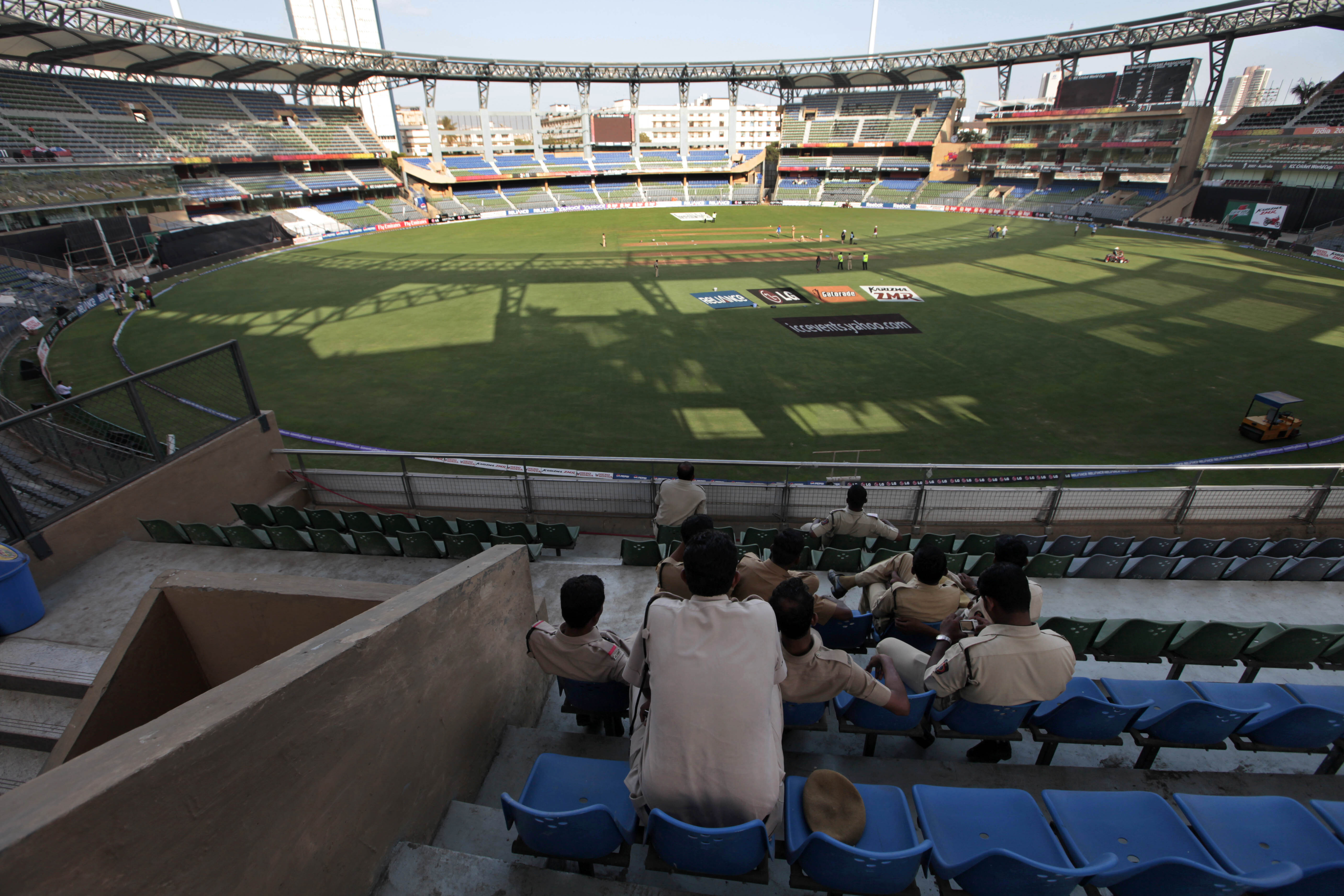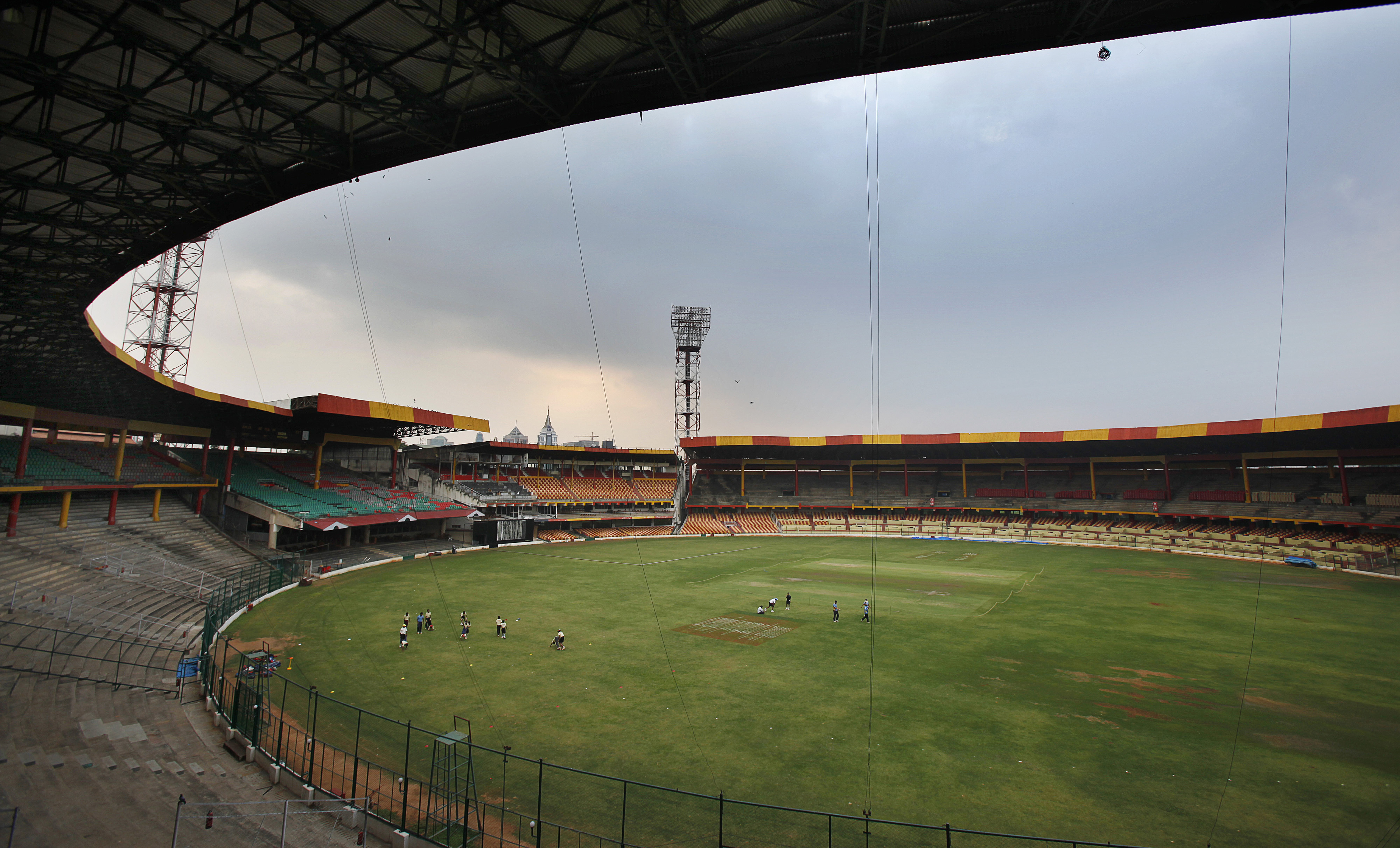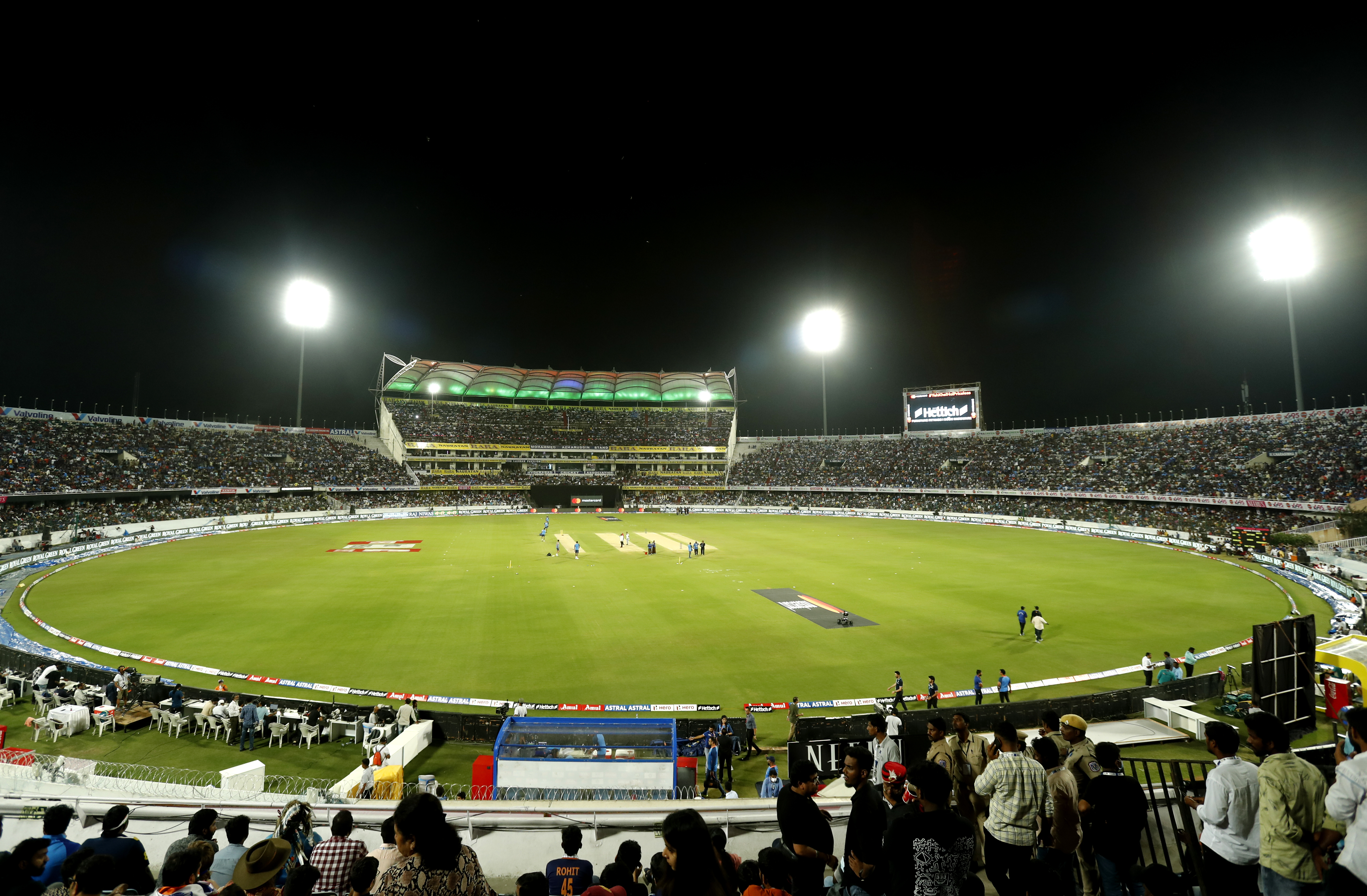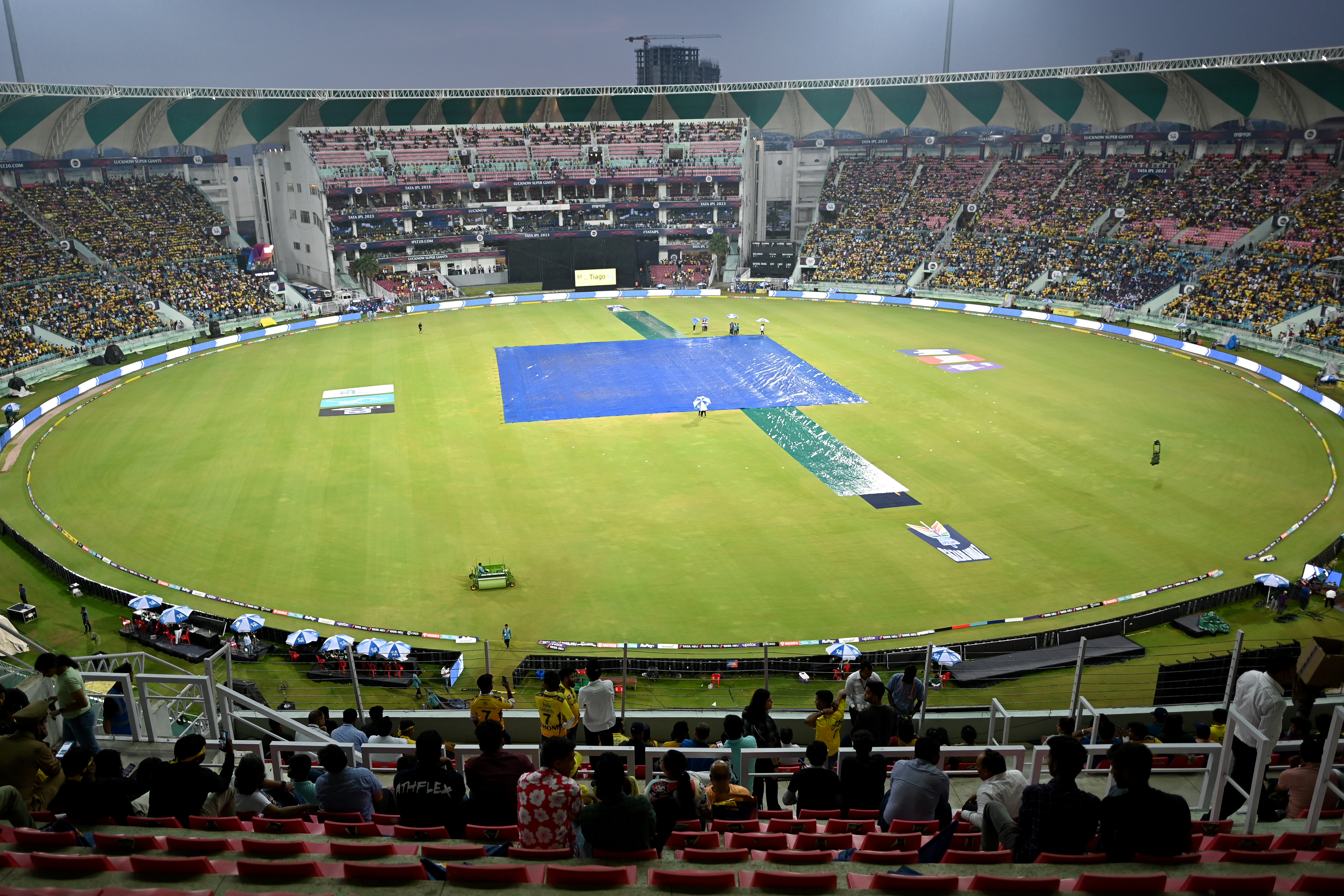
Ten teams will lock horns for the biggest prize in cricket when the ICC Cricket World Cup gets under way in India on October 5.
The opening game of the 13th edition of the tournament will be a replay of the 2019 final, with defending champions England taking on New Zealand at the Narendra Modi Stadium in Ahmedabad.
The final of the 2023 edition will be played at the same venue on November 19.
The one-day international (ODI) competition will be held across 10 stadiums, from Chennai in the south to Dharamsala in the north, Kolkata in the east, to Ahmedabad in the west.
The venues stand at varying locations across the country, from the beachside Chidambaram Stadium in Chennai to the Dharamshala Stadium which sits amid picturesque mountains of the Himachal Pradesh state and the Arun Jaitley Stadium in the heart of capital New Delhi.
Some of these stadiums have been controversially renamed over the past few years to honour former heads of state and prominent politicians. Most recently, the stadium in Ahmedabad was renamed to honour current Indian Prime Minister Narendra Modi in 2021 in a surprise move, hours before its inauguration.
Arun Jaitley Stadium
Location: New Delhi
Capacity: 55,000
Inauguration: 1883
Matches: South Africa vs Sri Lanka (October 7), India vs Afghanistan (October 11), England vs Afghanistan (October 15), Australia vs Netherlands (October 25), Bangladesh vs Sri Lanka (November 6).
One of the oldest cricket stadiums in the country and located in the heart of the Indian capital, the Arun Jaitley Stadium has held World Cup matches every time India has hosted the tournament (1987, 1996 and 2011).
Formerly known as the Feroz Shah Kotla Stadium, the venue was renamed after a former finance minister and parliamentarian from PM Modi’s Bharatiya Janata Party (BJP) following his death in 2019. The move was met with some criticism but local cricket administrators said it was done to credit Jaitley for uplifting cricket in the capital.
The stadium has hosted several memorable matches, including Indian leg-spinner Anil Kumble’s record-breaking achievement of taking all 10 wickets in a Test innings against Pakistan in February 1999.

Wankhede Stadium
Location: Mumbai
Capacity: 33,000
Inauguration: 1974
Matches: England vs South Africa (October 21), South Africa vs Bangladesh (October 24), India vs Sri Lanka (November 2), Australia vs Afghanistan (November 7), first semi-final (November 15).
The iconic scene featuring former India captain MS Dhoni coolly launching a Nuwan Kulasekara delivery into the Mumbai sky before thousands of cheering India fans to win the 2011 ICC Cricket World Cup unfolded at this stadium.
The venue, located in India’s so-called “cricket capital”, is based in Churchgate – an area renowned for hosting some of Mumbai’s most prestigious and well-known architectural structures.

Muthiah Annamalai (M A) Chidambaram Stadium
Location: Chennai
Capacity: 38,000
Inauguration: 1916
Matches: India vs Australia (October 8), New Zealand vs Bangladesh (October 13), New Zealand vs Afghanistan (October 18), Pakistan vs Afghanistan (October 23), Pakistan vs South Africa (October 27).
Located close to one of the longest urban beaches in the world – Chennai’s Marina Beach along the Bay of Bengal – the M A Chidambaram Stadium is known for being home to a sporting and knowledgeable cricket crowd every time it hosts a match.
The pitch at MA Chidambaram, also known as Chepauk Stadium, is known to be a turning track which generally provides assistance to spin bowlers under humid conditions.

Narendra Modi Stadium
Location: Ahmedabad
Capacity: 132,000
Inauguration: 1983
Matches: England vs New Zealand (October 5), India vs Pakistan (October 14), England vs Australia (November 4), South Africa vs Afghanistan (November 10), Final (November 19).
The world’s largest cricket stadium will host five games, including the opener, final and the highly anticipated India versus Pakistan match.
Before it was renamed after Modi, it was formerly called the Motera Stadium or the Sardar Vallabhbhai Patel Stadium – after one of India’s best known independence leaders.
In 2022, it hosted the IPL final between Gujarat Titans and Rajasthan Royals, with an attendance of more than 101,000 people, the largest of a T20 match.
The stadium has hosted several political events and rallies as well, including the “Namaste Trump” event in honour of former US President Donald Trump in 2020.

Eden Gardens
Location: Kolkata
Capacity: 68,000
Inauguration: 1864
Matches: Netherlands vs Bangladesh (October 28), Pakistan vs Bangladesh (October 31), India vs South Africa (November 5), England vs Pakistan (November 11), second semi-final (November 16).
Eden Gardens is one of the oldest cricket grounds in the world and has hosted hundreds of international cricket matches, including the 1987 World Cup final.
It is the second-largest cricket stadium in India.
It was referred to by former Australia captain Steve Waugh as the “Lord’s of the subcontinent” – a comparison to the historic Lord’s Cricket Ground in London.
Eden Gardens is located near the Bhowanipore area of Kolkata, minutes away from the Hooghly river, and close to a large urban park called Kolkata Maidan.

MCA International Stadium
Location: Pune
Capacity: 37,000
Inauguration: 2012
Matches: India vs Bangladesh (October 19), Afghanistan vs Sri Lanka (October 30), New Zealand vs South Africa (November 1), England vs Netherlands (November 8), Australia vs Bangladesh (November 11).
Situated in the Gahunje area in Pune district, this stadium is set to host a World Cup match for the first time on October 9, featuring the highly anticipated match between India and Bangladesh.
The venue was designed by renowned British architect Sir Michael Hopkins, who also drew plans for the Rose Bowl cricket ground in Hampshire, United Kingdom.
M Chinnaswamy Stadium
Location: Bengaluru
Capacity: 40,000
Inauguration: 1972
Matches: Australia vs Pakistan (October 20), England vs Sri Lanka (October 26), New Zealand vs Pakistan (November 4), New Zealand vs Sri Lanka (November 9), India vs Netherlands (November 12).
Named after a Board of Control for Cricket in India (BCCI) chairman, M Chinnaswamy Stadium has been the site of many memorable ODI, Test and T20 games.
In the 2011 World Cup, Ireland’s KJ O’Brien scored the fastest century in a World Cup match against England off just 50 balls.
The venue was the first cricket stadium in India to use solar panels to generate electricity.

Himachal Pradesh Cricket Association Stadium
Location: Dharamsala
Capacity: 23,000
Inauguration: 2003
Matches: Bangladesh vs Afghanistan (October 7), England vs Bangladesh (October 10), South Africa vs Netherlands (October 17), India vs New Zealand (October 22), Australia vs New Zealand (October 28).
The HPCA Stadium, with its picturesque views featuring the Himalayan mountains, is located in the Kangra district of Dharamsala.
Renowned for its natural beauty and stunning landscapes, Dharamsala is globally recognised as the residence of the Dalai Lama of Tibet, adding to its cultural significance. It is the smallest tournament venue and its short 64-metre boundary will be at the heart of the action.

Rajiv Gandhi International Cricket Stadium
Location: Hyderabad
Capacity: 39,200
Inauguration: 2005
Matches: Pakistan vs Netherlands (October 6), New Zealand vs Netherlands (October 9), Pakistan vs Sri Lanka (October 10).
Also referred to as Hyderabad Cricket Stadium, the venue is located in the eastern suburb of Uppal, in the capital of the southern Telangana state.
It is named after former Indian PM Rajiv Gandhi, and the father of opposition and Congress politician, Rahul Gandhi.

BRSABV Ekana Cricket Stadium
Location: Lucknow
Capacity: 50,000
Inauguration: 2017
Matches: Australia vs South Africa (October 12), Australia vs Sri Lanka (October 16), Netherlands vs Sri Lanka (October 21), India vs England (October 29), Netherlands vs Afghanistan (November 3).
Ekana is the home ground for the IPL franchise Lucknow Super Giants. It is located in the Gomti Nagar area of Lucknow.
The venue is named after former Indian PM Atal Bihari Vajpayee, who was also from Modi’s BJP party.








